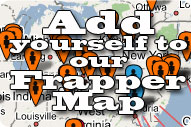HistoryPodcast 71 - Battle of Blair Mountain
The Battle of Blair Mountain was one of the largest armed uprisings in American history. From August to September 1921, in Logan County, West Virginia, more than 10,000 coal miners confronted state and federal troops in an effort to unionize the West Virginia mines. It was the final act in a series of violent clashes that have been termed the Red Neck War, from the colour of neckscarves worn by the miners.
HP71 - Battle of Blairmountain.mp3 24:24 - 22.5MB
Links:
Post your comments about this podcast here
Read the transcript here
Wikipedia Article
HP71 - Battle of Blairmountain.mp3 24:24 - 22.5MB
Links:
Post your comments about this podcast here
Read the transcript here
Wikipedia Article








